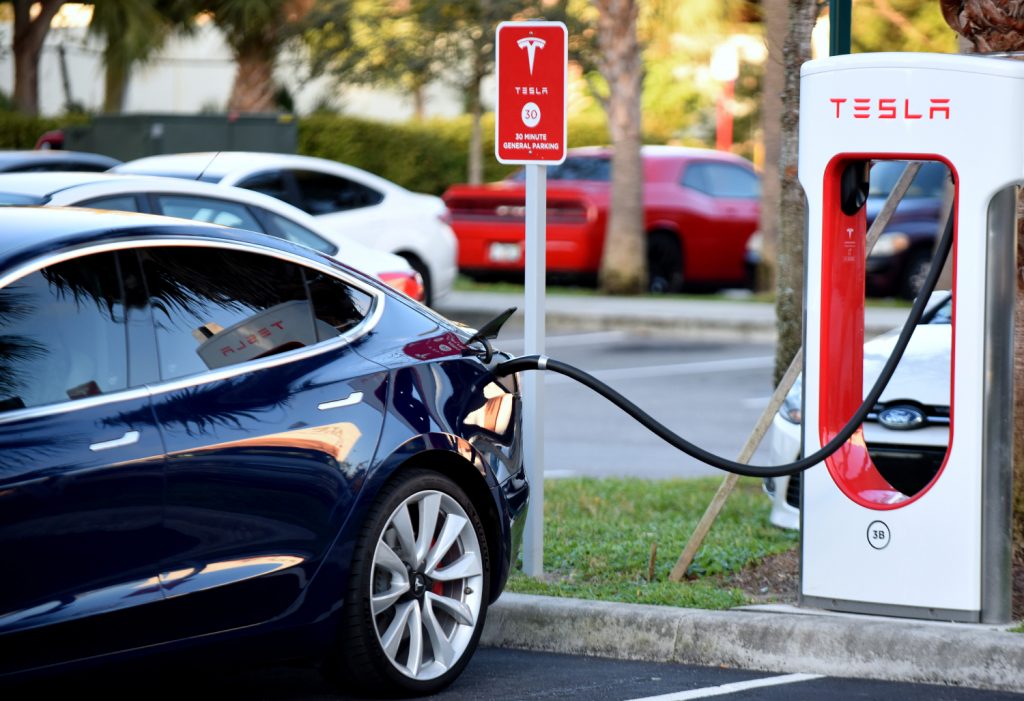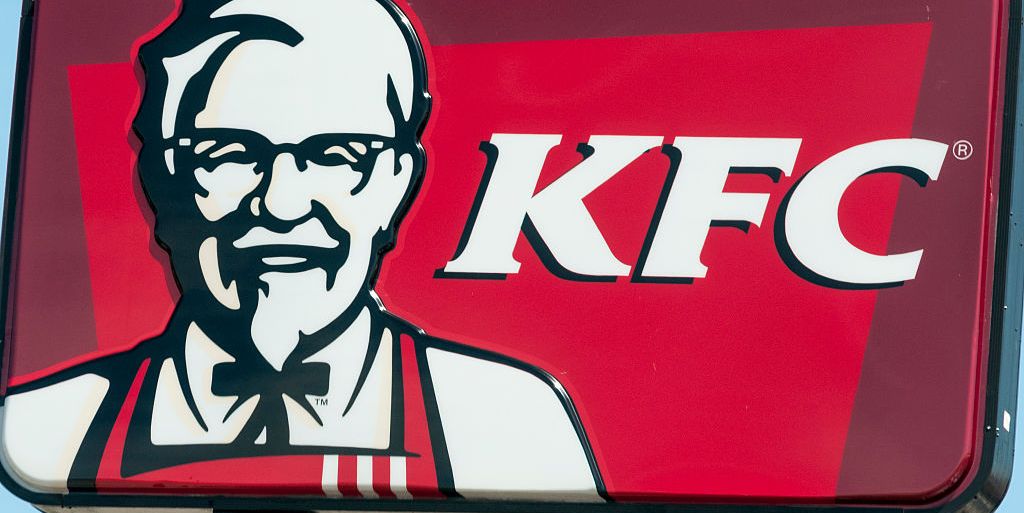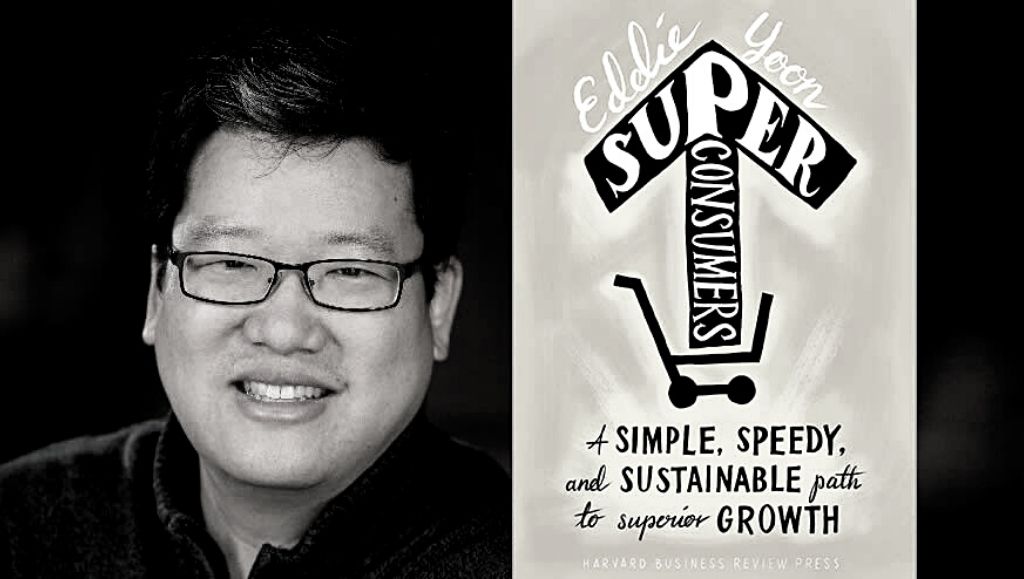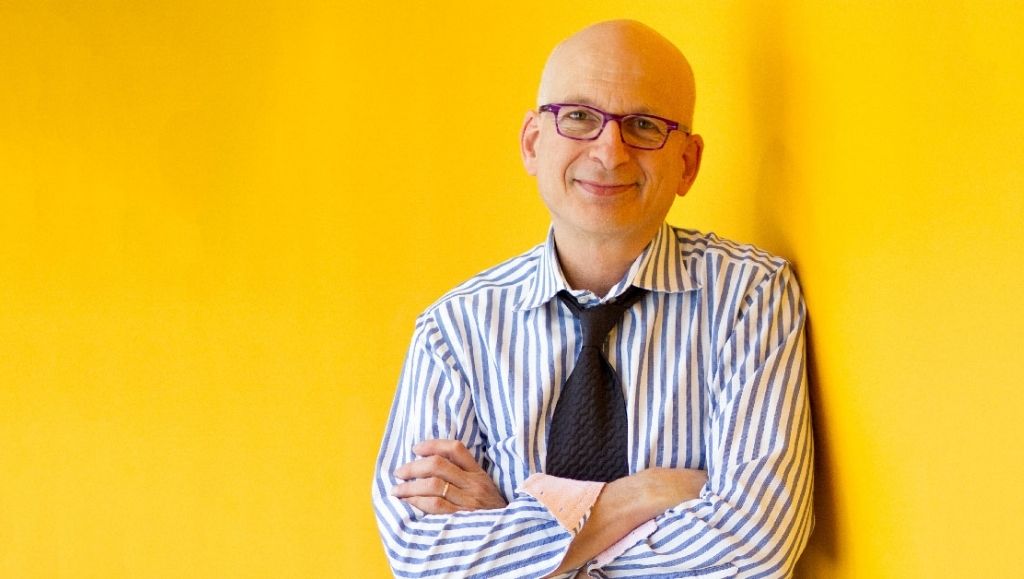Every mid-career marketer I know is constantly looking for ways to upgrade themselves by reading books, talking to people smarter than them, and learning about the intriguing theories in behavioral science. And while there are plenty of such resources around us, they are mostly hidden in plain sight. It’s harder to find the wisdom that we are looking for than attaining the wisdom itself.
Luckily, sometimes all you need is to hear a random conversation to discover new insights and epiphanies. Just recently, Yaag interviewed Rory Sutherland, the Vice Chairman of Ogilvy (UK) and the Founder of the Behavioural Science Practice, for The ABM Conversations Podcast and it might just be the most compact body of knowledge in behavioral science that I have heard. I am not exaggerating when I say that listening to him for a few hours is akin to getting a mini-MBA degree in human psychology.
Rory Sutherland reminds me of the amazing co-traveller who would pick a random conversation with you about a cup of tea and suddenly—about two hours down the road—you will find your mind blown in his audience of one listening to everything from The Big Bang to the future of mankind.
In this particular podcast appearance, they cover a lot of ground ranging from the perceived role of advertising and marketing to the myths about performance marketing, technological innovation, and how to cheat the laws of physics. Here are the main excerpts from the interview.
A non-traditional definition of branding
In Darwinism’s language, brands are units of selection. Brands thrive in free markets because brands serve many, many other purposes. Without brands, we have no means by which we reward good service and good products with repeat purchases or punish disappointing products or businesses by boycotting them.
Even with a one-off purchase, for example, a brand’s reputation gives you enough trust and faith in the supplier to confidently expect not necessarily a superb product but that the seller has some skin in the game. The brand’s reputation is what informs us that they are not going to sell you something terrible because their brand reputation is at risk. The reputational damage of ripping you off exceeds the short-term gains of selling you a substandard product.
This enables brands to sell their products more widely and at a premium. In free markets, brands perform that role of upholding their reputation and ensuring their product’s quality.
In some political regimes like Soviet Russia, they believed that the concept of brands is contrary to Marxist values. If you had to buy a loaf of bread, for example, it’s literally what you got. When you entered a shop to buy bread, it was just labeled bread. The package wouldn’t mention the manufacturer’s name or a source of origin. It was indistinguishable from the bread that you could buy from another grocery store down the road.
Now, the problem with a no-brand bread is that every bread manufacturer was engaged in a race to the bottom. As a business, they had no incentives to make their bread better than the competition. What’s the point of putting more effort or quality into a loaf of bread if it was just subsumed as a commodity along with everybody else’s bread?


This is just an example that explains how lack of branding kills innovation. It’s a bigger problem in other industries with things like rivets, for example, where every manufacturer involved in making rivets has an incentive to mass-produce rivets to save manufacturing cost—which invariably means the rivets will be of subpar quality. And when a ship (or an airplane) falls into pieces, it is hard to single out a rivet manufacturer for a wreck because everyone’s rivet looks exactly the same.
This is the reason the Soviet Marxist regime had to backtrack on their economic policies and start stamping factories’ initials on the rivet to include a quality control feedback mechanism.
In retrospect, it’s one of those things that is obvious. But economists tend to love commodities. They think it’s very neat to define a product and trade it as a commodity regardless of its providence or its manufacturer—because it’s defined purely by what it is. However, when you commoditize a product category, every player in that market segment can defile or pollute the overall supply and production because there’s no incentive to make better products.
We witnessed this as a first-hand example in the UK about five years ago when beef suppliers contaminated beef with horse meat. If a beef manufacturer was selling premium breed beef in their own name—I doubt that they were going to adulterate the meat. But if you are a supposed beef marketing board whose job is to simply sell certified-grade beef, you have a fair incentive to slip a bit of horse meat to increase your margins.
This is the reason why commodified products don’t have a distinctive advantage over others in their category. I can’t buy fair trade oil, for example, because gasoline is a highly traded commodity. I can’t choose to pay a premium to top up the car with gasoline—let’s say—that was imported from a democratic country where women are treated fairly and equally. I can’t exert any consumer influence other than choosing to buy the product or not buying it.
Ironically, branding is usually considered both—an example of consumer power as well as seller power. As a consumer, I have the power to either reward or punish brands based on their salient features. At the same time, brands with unique traits and good reputation enjoy a great competitive advantage in the market.
COVID’s effect in changing the consumer behavior
It depends. First of all, on the individual. Lots of individuals have been very, very differentially affected by COVID financially. Epidemiologically, different people will react differently. I agree with Daniel Kahneman that some people—including me—will be more fearful going forward. While it was perfectly normal in 2018 or 2019 to be in a crowded airport or crowded concerts, I would regard being in crowded places as mildly alarming.
But other people might try and make up for the lost time. There will be some sort of post-COVID boom—a kind of Roaring Twenties for certain people who are partying harder or being slightly wilder. After the COVID outbreak was more or less brought under control in China, they had this outbreak of something they called “revenge shopping” where people went on big shopping sprees to make up for the lost time. But that right only applies if you have saved money because not everybody did. Some people saved money during the COVID period, others lost it.
I borrow it from John Quilt—Dean of Harvard Business School—when I say this: there are mainly four kinds of products:
- Essentials
- Treats
- Postponables
- Discretionaries
Food and water are essentials, for example, because they give us the energy to survive. A chocolate bar is a treat because although you can live without chocolate bars, life is dismal without them. Then you have car purchases that can be postponed. A classic case is if you already have a car, replacing it can be postponed even if not indefinitely. But a holiday on a cruise ship is entirely discretionary.
So the way different people will react during and after COVID will vary depending on which product category you find yourself in. If I had to give you an example, lipstick brands suddenly boomed in popularity after the 2008 financial crisis. Premium, high-margin lipstick brands like Dior enjoyed a very high run of sales because people were financially uncertain. People were unlikely to spend $3000 or even $500 on extravagance at the time. But a $30 lipstick was the kind of treat that they could still afford and feel safe about.
My philosophy behind this is—human life requires not only a sustainable source of calorific value but also a degree of variety. All the world’s religions seem to understand this, which is why they have periods of fasting punctuated by lavish feasts and festivals. As humans, we are happier when we have a degree of variation in our lives—short periods of self-denial interspersed with periods of self-indulgence. In consumer terms, treats serve some of that purpose very well.
In Britain, we have an unclear definition of what is a “minimum survival income.” Some people contest it, but one of its British definitions includes “one takeaway meal a week.” But then some people came forward and said, “hold on, you don’t actually need a takeaway meal. There are cheaper ways to eat.”
But the other side says that if a family doesn’t have a break from cooking or if they don’t have a special treat or meal once a week—life turns into drudgery. I buy that argument, I understand the economist purists who say you can’t say that a takeaway meal or street food isn’t essential. We do need some sort of variety in our lives.
This might be one of the reasons why poor people tend to smoke. Cigarettes are quite expensive. But they are relatively inexpensive luxury products that punctuate your life’s daily monotony.
The problem of herd mentality in advertising and marketing
A lot of budgetary behavior in marketing is driven by the herd mentality. Brands run their marketing thinking “my competitor is doing this, therefore I must do it too.”
Some time back, there was an interesting discussion on Twitter about why ad jingles suddenly disappeared from the British advertising scene. The general evidence is that jingles are sonic identifiers. Sonic brand identities are extraordinarily potent. They became obsolete partly because they were starting to be seen as old-fashioned. That’s the herd effect for you in advertising and marketing.
Ogilvy UK brought back British Airways’ Delibes Aria and we let it lapse for a few years while we were the Airways’ ad agency. I think it was just an omission due to the herd mentality, not an oversight to let go of it. I don’t think anybody consciously said, “no, we don’t need this.”
And I think that was a mistake. When you have a sonic property of that kind, the decision to part with it is extraordinarily dangerous. It’s not necessarily wrong, but very, very high risk. Sonic identities are unconscious, they have been built over many decades at the expense of many millions of media spend. It’s foolish to discard your investment so casually.
On the purpose of advertising
I went to the same school as Paul Feldman, who is the real expert on this topic. Paul has written a book called, ‘Why Does The Peddler Sing?’ which makes the case that sometimes it’s perfectly okay for advertisers to entertain. There’s a long-held tradition where a salesman entertains consumers as part of their salesmanship. Paul in his first book, ‘The Anatomy of Humbug: How to Think Differently About Advertising’ makes the same point.


I think the narrow belief that the purpose of ads is only to sell often comes from a mistaken over-application of the division of labor. Adam Smith gave us a wonderful insight into the division of labor which makes sense in a perfectly laid out mechanical setting.
It makes perfect sense to say this object performs this function and only this function in a manufacturing setting where the mechanism is fully designed and everything obeys the unchanging laws of physics. What is the function of a carburetor in a car? Same as the core, specific function of a flywheel in a steam engine. You can define a machine’s function and optimize it around a single definable purpose.
But marketing and advertising operate within a complex system. If you think about it, the human brain is one of the most complex things in the universe which makes collective human behavior more complex because it’s the interaction of lots of complex systems.
So it’s dangerous to attempt that same degree of division of labor and function to the human mouth like a car carburetor, for instance. A human mouth has a complex set of functions such as breathing, speaking, eating, or kissing. In evolved systems like the human body, the same thing can perform a number of different functions.
The function of ads might be a simple provision of information and there’s nothing wrong with that. It is, in fact, an ad’s function to overcome the inertia of buying something now to save 10% instead of having to wait for the next week to buy the same product. That’s a perfectly reasonable thing to do in an advertising budget.
But that’s not the only way ads work. No. Let’s say I am thinking of buying an electric car. And I don’t know if you studied electric cars, but after about 10 minutes of study, it feels like you need a degree in electrical engineering to understand this industry. It drives me nuts.


But my brother is an astrophysicist. He is obsessed with electric cars, which is why he was able to help me out. He said if you have a 50-kilowatt DC charger and you plug in your car for 20 minutes, you will gain 50 miles of range. If you have a 20-kilowatt charger, you will gain 20 miles of range. And if you have a 150-kilowatt charger, you will gain 150 miles of range. And that’s all I needed to know.
Suddenly, I understood what was going on. So a part of advertising might just be to make something comprehensible, to make something incomprehensible seem familiar and reassuring. It might also make something normal and boring suddenly seem exciting again—like Diamond Shreddies. An ad’s function is also to make something famous.
Sometimes, just being famous exposes your product’s upside—your surface area to the potential opportunity. Because if more people hear of you, more people will get in touch with you.
One of the reasons that I write for The Spectator, one of the reasons I still work for Ogilvy is that if I email someone like Daniel Kahneman, it’s 10 times more likely that he will reply since I am vaguely noted as the Spectator’s writer or because I’m the Vice Chairman of Ogilvy.
We get into this obsessive thing that says advertising is all about purpose. But advertising’s purpose is also to create a distinctive platform from which a brand speaks and distinctiveness is hugely valuable.
And I think Dove has done fantastic advertising—through Ogilvy—to make beauty a source of contentment and happiness rather than a source of anxiety. It promotes beauty products without promoting anxiety or feelings of discomfort or feelings of inadequacy. And that purpose is recognized.
On marketing’s role to build brand perception
There’s an anecdote that the job of marketing is like the role of a janitor who sweeps the floor, which is as important a role as the restaurant’s chef who builds the main product. This actually comes from Ludwig Von Mises—although I’m often attributed with that.
Ludwig Von said that there is no useful distinction to be made between the value created by the man who cooks the food manufacturing and the value created by the man who sweeps the floor. And by “the man who sweeps the floor” he meant marketing.
If the restaurant isn’t clean, it isn’t attractive, the signage is wrong, or if you put out some inappropriate signals as a restaurant—you will inadvertently destroy your brand. You may have a Michelin Star rating, you can have the best chef in the world, but you will still be a lousy business if you can’t create the right brand perception.
The point is that the nature of the context in which you experience something is a primary determinant of how you perceive that thing—the value it delivers and the emotional reaction it arouses.
I have got a little story about this. My whole attitude towards KFC as a brand changed when I found out that Colonel Sanders was 65 years old when he founded the company. That doesn’t change the chicken. It doesn’t change the nature of the seat I sit on to eat the chicken. It doesn’t change anything objectively, but it does change how I think about that whole business.


But now I think of it as an extraordinary product of a man’s lifetime, his work to perfect what he called making chicken the hard way. He said, you know that there’s no easy shortcut to making great chicken, you have to make it the hard way.
Don’t get me wrong. There are some products that are so spectacularly brilliant, so self-evidently necessary in their function that they sell themselves. If you set out to make a list of those products I would argue you can count them on your fingers.
Here’s another example I keep coming up with. If you are running a cafe, leave the tables and chairs outside even if it’s raining or even if it’s cold. That’s because it’s a readable signal to anybody from 300 yards away that there’s a cafe that exists in that spot and it’s open because if it wasn’t the owners would have stuck the chairs away for safety. Leaving the chairs outside is a massive advertisement too. After I gave that example in one of my speaking sessions, someone got in touch with me and said you are probably right because I used to work in a cafe like that.


He said, I didn’t own the cafe but I was part of the crew that got paid by the hour. We really didn’t want customers walking into the cafe 10 or 15 minutes before closing time because then they would buy a coffee and then they would sit around. Now we couldn’t clear up the cafe, purge the espresso machine, or clean the place. So we would end up staying for another half an hour after closing time.
So they came up with the above trick in reverse. They discovered that when they stacked two chairs upside down on a table just when they were about to sweep the floor—no one bought anything. No one came in or stayed for long.


What is fascinating is that a lot of businesses—who may have a brilliant product —are doing the equivalent of those stacked chairs. They never ask themselves—are we doing the equivalent of stacking chairs upside down? They have fantastic coffee machines, a great barista, but there’s just something there that’s putting people off.
That’s why it’s as important to have someone sweep the floor clean as much as having a Michelin Star chef. It doesn’t matter how good the food is if there are dead cockroaches lying around and nobody to sweep the mess. What’s the point of producing brilliant food if your customers can’t enjoy their meal?
On psychological innovation
I believe that what unites us all in the behavioral science community, the design community, or the complex systems community is the idea that we can improve the world by more than just changing its physical variables.
I recently wrote an article on The Spectator where I made the point that one of the things that’s an obstacle to people in Britain buying electric cars is range anxiety. It’s the fear that you will be stranded and unable to charge your car. So the way to sell electric cars is to disabuse people of this fear.
In the US, this is an irrelevant fear because there are several highways across the country where you can drive for two hours straight without seeing a single house. If you are on I-40, for example, you are heading east in a straight line and there’s nothing on either side of that road for miles and miles.
But Britain is a tiny country. It’s hard to drive 150 miles without driving into the sea. And if your charger isn’t working, you will find another one some eight miles away.
The US has about 165,000 gas stations. The UK has a fifth of the US population and gets by with, let’s say, eight and a half thousand gas stations. So the infrastructure problem in the UK is inordinately less than it is in the US.
So my point is that there are two ways to sell electric cars. One of the ways is to make them better and better and have longer and longer range and better and better performance. That’s a perfectly noble endeavor. I’m not suggesting we should give up that game completely. But at some point, we will run up against the laws of physics because the cars can only go so fast.
The other way to sell electric cars is to stop making them so much better in terms of their range. People fear that a car without 350 miles of range is somehow inadequate, which might be true if you live in northern Utah. But I don’t think that is true if you live in the Southeast of England. Any good systems thinker would ask: why are we improving this metric? And does the consumer notice or even care? And would we be far better off tweaking a psychological metric rather than an objective one?
Here’s another example, Uber didn’t reduce the wait time for cabs. But by having the Uber map, waiting for your cab becomes less painful.


I just got an email from someone in Italy who claims to produce music that completely removes human anxiety. I don’t know this for a fact. But if this is true, just think what that means for the world’s busiest airports? A big reason why we want flights to run on time is that delays tend to make us deeply anxious. But if the airport plays the right kind of music, they can say “your flight is delayed by 20 minutes” instead of simply saying “flight delayed.” From an emotional standpoint, the flight operators can solve 90% of the problem without any adjustments in the actual departure time for the next flight.
And why not solve problems psychologically if it’s environmentally friendly to do so? Ultimately, the purpose of marketing is to sell—to attain saleability. Marketers make it possible for consumers to buy something which they already wanted, but lacked the confidence to buy.
On performance marketing
The danger with performance marketing is that you are only measuring a very small part of the equation. With performance marketing, you can’t even measure immediately. Sometimes, people click and buy a product at a much later stage. Deferred persuasion is probably more valuable than immediate persuasion.
For example, if you get a good clickthrough and manage to get someone to stay at the DoubleTree Hotel rather than Hilton Hotels—that looks like a spectacular success. It’s very easy to measure the efficacy of that kind of activity although both hotels in this case are owned by the same hotel chain. But if you had to persuade people who were going to stay with relatives to stay at DoubleTree, it’s a longer-range thing. It’s more valuable, but it’s also harder to measure.
Performance marketing assumes that what’s easy to measure as an activity is also what’s valuable as an activity. A lot of times, what performance marketing is doing—which is a perfectly worthwhile and justifiable role of marketing—is getting people to buy something (that they were going to buy anyway) 10 minutes earlier perhaps for a discount. Overcoming inertia is not a bad thing to do. I’m not disparaging it as an approach. But I think it’s not particularly valuable despite being very measurable.
I have been a copywriter for many years now. And there’s one headline that I don’t think anyone can beat. And that line says, “buy something that you’re going to buy anyway—for 10% less.” Yeah, absolutely. Yep. It’s the most persuasive thing in copywriting. Think of this as you being happy to pay the full menu price for a takeaway meal. But if the takeaway place is giving you 15% off because it’s a takeaway order, you are not going to say, “No, I don’t want that discount.” And it is quite common for businesses to do this kind of stuff.
A lot of performance marketing is doing exactly that kind of thing—it’s measurable and accountable. And if you as a marketer can say, “I grew this campaign 15% better this year than last year” you can keep your job. But this is a dangerous product of siloing people because you are defining customer behavior not by what’s valuable, but by what’s easy to measure for you.
This is fundamentally known as quantified quantification bias, which makes you obsess about what’s measurable rather than measuring what’s important.
“If I can’t measure the results directly, then I won’t do it.”
~ Quantification Bias
The marketing world has dangerously found this irresistible catnip that can stop us from taking up critical endeavors. This is the kind of belief in marketing we need to push back. The other thing that happens is that we test too narrowly—like testing inertia-busting ads by incremental improvements. I think we should be spending far more money testing in areas where we have a far greater rate of failure if we are trying to do something much bolder.
On butterfly effect in consumer behavior
The mainstream economic thought is modeled after Newtonian physics. And in Newtonian physics, there is a kind of proportionality—if you keep all of the variables constant, then intervening in one variable will have a proportionate effect on some other variable. My argument is that such proportionality is a mistake especially in the context of human psychology. That’s because tiny things like not stacking the chairs for 15 minutes before closing your cafe can have an inordinately high effect on human behavior.
We are making a mistake if we don’t go butterfly hunting. There was a branch of John Lewis & Partners near where I lived, which recently closed down. And I always felt that the branch closed because the signage to the entrance was appalling. It made two mistakes.
One, it called itself simply home, which made everybody think it only sold furniture—which it did. But it also sold consumer electronics. It actually sold loads of loads of things, but everybody just thought of it as a furniture shop. And therefore I won’t go there if I’m not looking for sofas. It also misplaced the entrance signage to the store. I always wanted to go to John Lewis and say, “look, you can probably increase your sales by 20% with a tiny intervention here.”
There’s a book I recommend called ‘Obvious Adams.’ It’s one of those hokie American Edwardian books about how to be successful in business. It’s about a character called Adam who’s an ad man in the book. When I first became the creative director at Ogilvy, Mike Walsh—the chief executive officer of Ogilvy across Europe—gave me a copy of this book.


When I first opened the book, I was slightly offended because it seemed like this homespun hokie American wisdom. But when I read the book, I realized it was actually a work of considerable genius. It’s a very short book about butterfly effects. It’s about going and looking at how there are strong path dependencies in all of human behavior…that there are extraordinarily strong reactions to contexts where the slightest change in the phrasing of something can change the meaning.
It has plenty of anecdotes on how if you change the meaning of something, you change the emotional response to it. And when you change the emotional response to it, it changes your behavior. Human behavior doesn’t necessarily require massive incentives to change. It just requires a change in fashion to change social norms.
I mean, look at what’s happened to flexible working or the use of video conferencing. Between 2019 and 2020, it didn’t change in pricing or technology. Zoom in 2019 was the same in 2018 except for a few security enhancements. But if suggesting a video call made you a bit of a weirdo in 2018, using Zoom was perfectly normal behavior in 2020 because of the pandemic.
It’s 10 times more effective to suggest a video call now than it was a few years back. But nothing about the objective reality changed, it was contextual. Look how a small butterfly effect changed all of that.
“A flower is simply a weed with an advertising budget”
Occasionally, people ask me what’s the future of advertising. And some people believed that with the kind of perfect information that the internet offers, no one would need to advertise anymore because consumers would simply inform themselves.
But advertising has lots of roles to play other than just informing. Advertising is actually 20 million years old because bees are 20 million years old and flowering plants are 20 million years old. There are also animals, of course, that also advertise heavily.
There’s a great thing called aposematic signaling in many animals which basically says “I’m brightly colored. Therefore I’m probably poisonous. Therefore, you probably don’t want to try to eat me.”
Nature has a huge advertising budget for its entities to signal something reliably about themselves in advance of something else’s decision-making—whether that be a bee or a predatory bird. To do that, you need to advertise and it has a cost involved in it. The flower puts itself slightly at risk by advertising because it makes it more noticeable to herbivorous animals. Advertising also involves a huge expenditure of resources—like nectar and pollen in terms of a flower which bribe the bees to visit the flower.
Hummingbirds—for example—use the size of the petals as a reliable heuristic guide to the supply of nectar because it requires health in a plant to produce generous petals. A plant that can’t produce generous petals isn’t healthy enough to produce a worthwhile supply of nectar. Female peahens gauge the peacock’s tails as a mark for genetic health. So for a bee to buzz over a flower, it’s much more likely to make the journey as it has the confidence that the journey is worthwhile.
That is the same argument for advertising cars. If it wasn’t worth it for me to test drive a car, it wouldn’t be worth it for the Ford Motor Company to spend $20 million (in marketing) telling me about it. It’s not a reliable guide of perfection, but it’s a reliable guide of non-crappiness.
In many cases, humans satisfy themselves rather than optimizing. We take a course of action where the worst-case scenarios are least catastrophic, which offers us a reliable signal.
Daisies clue their petals when they don’t contain any nectar or any pollen to avoid fake advertising. It’s a signal through the costliness of its display, the fact that it’s engaging in an upfront expense, which would not pay off unless you are prepared to make repeat visits to me.
“The frame of reference dramatically changes the actual value of something”
Adam Smith spotted this while most other economists didn’t because they wanted to believe that the value is in the part of the value creation process. You can optimize the value creation process which—bluntly put—is manufacturing and distribution. They have a simple efficiency optimization problem or at least it can be presented as though it were. Even in manufacturing, you need a certain amount of slack in the system for it to be optimally effective as distinct from efficient.
There’s a great book I recommend to everybody by Roger L. Martin called When More Is Not Better: Overcoming America’s Obsession with Economic Efficiency.


But the point is just as Adam Smith spotted, something has value only as far as someone is willing to pay for it. Whether someone is willing to pay for it and how much they are willing to pay for it is as much a result of the context, framing, comparison, or meaning as it is a function of the actual objective qualities of the product itself.
For example, when I was persuading my dad to buy a multi-channel television, he said it was too expensive. And I said, “I will get it for you for Christmas. It’s fine. I’ll pay the £17 a month cable fee.” But he insisted that it was too extravagant. Then I said, “Wait a second. It’s not £17 a month, it’s much more than that.” And he asked, “What difference does that make?” So here is what I told him.
“You spend £2 a day on newspapers every day. So spending another 30% i.e. 60 pence on top to get two hundred channels of news and documentaries doesn’t seem that ridiculous.”
And he said, “I see what you mean.”
I couldn’t reduce the price of Sky (a British broadcasting company) to convince my father to buy cable TV. But I changed the way he looked at the price of Sky, which I made to look like a cheap newspaper rather than an expensive TV cable.
I made Sky go from looking like seemingly extravagant spending to an almost obvious purchase. My father still has the Sky subscription 10 years later at the age of 90. So it wasn’t exactly deceptive. I didn’t change the price—I simply enabled him to reframe something in a new way.
Why should people read your book, Alchemy?
Alchemy’s one-liner message is that it’s okay to cheat. We tend to believe that we didn’t write the laws of physics. Somebody upstairs (God) wrote it and hence we can’t rewrite it. And when we define a problem in physical terms, a lot of things seem impossible for us to change.


But if you define the problem in psychological terms—if you don’t just have the freedom to steer the ship but to change the weather—the same problems suddenly seem surmountable. There is a big difference between solving a problem within the realms of physics—where the laws are already written and aren’t going to change—and solving them in a complex system where we might be able to change the rules in the future. And it’s even better if you can rewrite the rules yourself.
That’s not true in physics where the laws are unchanging and fixed in a rigid equilibrium. You can apply recontextualization even in the world of physics. You can actually cheat in physics. Let me give you an example.
If I gave you two candles and said you have to use these two candles to boil this water, you might try and fail. Or you may do the calculation and say that the calorific value of the candles is insufficient to raise this volume of water to the boiling point. And you say that this problem is unsolvable.
But if you add another variable in the mix—such as air pressure or altitude—and take that same water up in the Himalayas, the two candles may well boil it. That’s because you have moved the definition of success outside the parameters, which you originally considered to be constraints to the solution.
“Sometimes the opposite of a good idea is to have another good idea”
Lately, I have developed a liking for making Indian Chai. And I think that the Indian Chai makers are making a mistake by offering easy-to-make Chai tea bags. To make Chai a bigger market, I think they need to start selling fancy Chai-making equipment. That’s because the fact that Chai is a bit more trouble to make than tea is actually its feature—it’s a benefit. You might benefit from a psychological effect, called the effort heuristics (similar to the IKEA effect) that you enjoy things a bit more if you put some effort into making them.
To really appreciate Chai—you need to boil the water, add milk, add a bit of honey, add some cardamom, or a bit of turmeric. You have to make it a more effortful process because sometimes the opposite of a good idea is another good idea.
One good idea is to make something convenient—like Chai tea bags. Some people will love it! But the other alternative is that you make something a bit complicated and a different set of people will like that even more. That’s because psychology is not mono-dimensional or linear.
“Asking people to buy an electronic car to be environment-friendly cars is like asking them to make a compromise”
If you look at the purpose of Tesla, it is to effectively bring environmentally sustainable transportation to the world. But more often than not, we automatically assume that if something is better for the environment, it’s going to be worse for the individual. If you position something to be low-fat, people experience it as not tasting nice. If you produce a fantastic detergent that’s kind to the environment, people will perceive it as not doing such a good job of cleaning the clothes.
So I worry that electric cars are also being seen as a compromise. I recently borrowed a Ford Electric Mustang Mach-E to drive for a few days. Having experienced the vehicle for a few days, I think I wouldn’t buy a non-electric car going forward. The car is good enough to sell on its own merits. We don’t necessarily need to activate people’s altruistic instincts to encourage them to buy an electric car. Maybe we can reserve people’s altruism for other behaviors which require a sacrifice and maybe make a big difference.
Diet Coke is quite the opposite side of that example. Coca-Cola deliberately has to make Diet Coke somewhat bitter than normal Coke because if you don’t take away some of the sweetness or the umami-ness of Diet Coke, people won’t believe it’s a dark drink. So you have to make a tiny perceptual sacrifice for the promise to be believable.


Favorite marketing book recommendations
The Choice Factory: 25 behavioural biases that influence what we buy by Richard Shotton.
Spent: Sex, Evolution, and Consumer Behavior by Geoffrey Miller
Anything written by Robert H. Frank who is a wonderful evolutionary economist.
I also read anything that Mark Ritson produces.
Influence: The Psychology of Persuasion by Robert Cialdini.
Matthew Syed’s ‘Rebel Ideas: The Power of Diverse Thinking.’
There’s a whole gamut of these books. The weird thing is we are all saying the same thing, maybe to slightly different audiences, maybe with a slightly different degree of specificity. But actually all of us were saying the same thing, which deep down is our education system.
What we are all saying with these books is that our education system is training us to solve Newtonian style, two-body problems with a limited number of known parameters where we have no control over the law’s in operation, real-world solutions.
But going forward will require this scale less and less. The alchemists scale of either deploying psychology or complexity or changing the parameters of optimization will become more and more important. Rewriting the rules will become a greater source of progress than actually playing by the preexisting rules.
On India’s rise as a marketing powerhouse
The Zoom boom has enormous potential for a largely English-speaking service sector in India. The Indian talent shouldn’t miss out on that. I genuinely predict that India will be a marketing powerhouse. We are already seeing it in the diaspora with people who run Mastercard or Microsoft. We need to work out what that magic is and replicate it.
I genuinely see this as being a huge source of competitive advantage for India going forward. India has a significant differentiating benefit that the wealth of marketing scale that you can tap on both internally and in the diaspora strikes me as being absolutely phenomenal.




